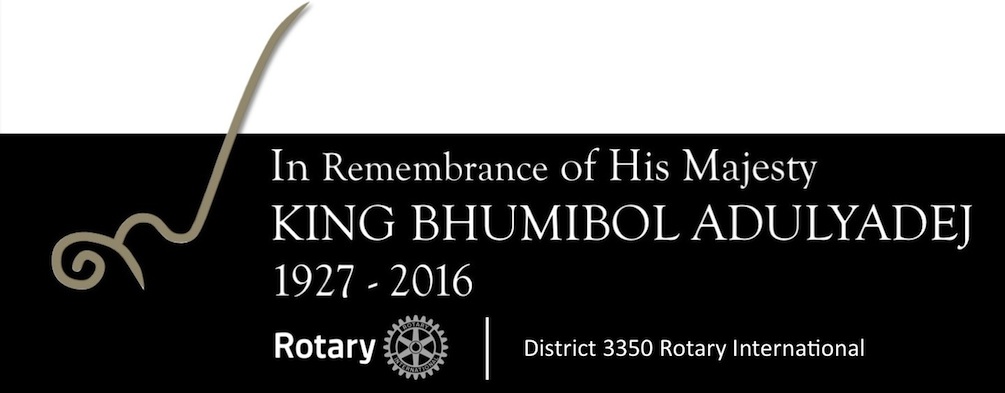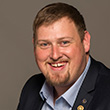EMPOWERING MOTHERS BY PREVENTING INJURIES
Robert Zinser is surrounded by women whose lives were forever changed after receiving surgery to repair obstetric fistulas, a preventable childbirth injury that can lead to social isolation, nerve damage, and death.
Robert Zinser understands numbers. The economist and retired president for Asia at chemical giant BASF has spent his life analyzing and predicting future trends. So when he initiated a five-year, $3 million pilot project to reduce infant and maternal mortality in Nigeria – a country with the second highest mortality rate in the world – he was doing more than just betting it would make a difference. He knew it would.
“In Nigeria, 70 percent of births are home deliveries. If the labor goes on too long, a woman can suffer a fistula,” an injury that often results in a stillborn baby, causes chronic incontinence, and can lead to social isolation as well as infection, nerve damage, or death. “With fistulas, prevention is key,” says Zinser, who co-founded what became the Rotarian Action Group for Population Growth and Sustainable Development and serves as its CEO.
Using a comprehensive approach of better antenatal care and quality assurance techniques, the project has helped reduce maternal mortality rates in hospitals by 60 percent. Since 2005 they’ve also repaired 1,500 fistulas – 500 more than their initial goal – and added microcredit and vocational training to the pilot project.
“Many women with this condition had been thrown out of their homes and needed a way to make a living,” says Zinser, who is a past district governor and member of the Rotary Club of Ludwigshafen-Rheinschanze, Germany. “They didn’t even know the injury could be repaired until we started running radio programs showcasing true-to-life stories and community dialogues.”
A Rotary Foundation grant for $478,000, sponsored by Rotary District 9125 in Nigeria and the Rotary Club of Weissenburg, Germany, helped launch the project. It also attracted an additional $826,000 from the German government and the Aventis Foundation. Activities such as solar power and water projects, donations of materials including mosquito nets, and cash contributions complemented the effort.
“If you travel in the developing world, walk through slums, and talk to people, you know that the women are often dominated by the men,” says Zinser. “They are suffering. They lack support. Women cannot be empowered if they can’t make their own choices in antenatal care and child spacing. But if mothers are empowered and healthy, so are their families, leading to an alleviation of poverty and hunger.”
So what does the 85-year-old Zinser plan to tackle next? “Scaling up,” he says. “The time is ripe. Maternal health is in the spotlight because of the UN Global Strategy for Women’s and Children’s Health. We should replicate and publicize this pilot project.
”My friends ask me, ’Why don’t you go golfing with us?’ They don’t know how my Rotary work benefits me,” Zinser says. “More and more, scientists are advising that if you do good for other people, it will keep you young. When I’m in Africa, I feel I am the right man, at the right time, in the right place.”
By Vanessa N. Glavinskas
This story originally appeared in the June 2012 issue of The Rotarian.
6-Aug-2013
-----------
"มือก็ไกว ดาบก็แกว่ง" ถ้าแรงมีชีวิตนี้มีหวัง
โรเบิร์ต ซินเซอร์ เก่งเรื่องตัวเลข เขาเป็นนักเศรษฐศาสตร์ที่เกษียณจากตำแหน่งประธานบริษัทเคมีที่ชื่อบาสฟ์ เอเซีย เขาใช้เวลาตลอดชีวิตในการคาดคะเนและทำนายแนวโน้มอนาคต ด้วยเหตุนี้ตอนที่เขาริเริ่มโครงการห้าปีที่ต้องใช้เงินสามล้านเหรียญสหรัฐฯ เพื่อลดอัตราการตายของทารกเกิดใหม่ในประเทศไนจีเรีย ซึ่งเป็นประเทศที่มีปัญหาอัตราเด็กเกิดใหม่ตายสูงเป็นอันดับสองของโลก โรเบิร์ตต้องทำมากกว่าการเดิมพันว่าผลของโครงการจะทำให้โลกมีอะไรที่แตกต่างเกิดขึ้น เขารู้ว่าผลที่เกิดขึ้นต้องมีมากกว่านั้นแน่
"ในไนจีเรีย แม่เจ็ดในสิบคนคลอดลูกที่บ้าน หากระยะเวลาในระบวนการคลอดนานเกินไป อาจส่วผลให้เกิดอาการฟิสตูลา ซึ่งเป็นอาการที่ส่งผลให้เด็กที่คลอดออกมาเสียชีวิต หรือผู้ป่วยมีอาการกลั้นปัสสาวะไม่อยู่ ทำให้ต้องแยกตัวเองออกจากสังคม มีอาการติดชื้อ ประสาทบางส่วนถูกทำลาย หรือตายได้ในที่สุด "สำหรับอาการฟิสตูลาแล้ว การป้องการคือวิธีที่ดีที่สุด" ซินเซอร์กล่าว เขาคือผู้ร่วมก่อตั้งกลุ่มปฏิบัติงานโรตารีเพื่อการพัฒนาอย่างยั่งยืนสำหรับประชากรในวัยเจริญเติบโต เขามีตำแหน่งเป็นซีอีโอของหน่วยงานนี้
วิธีการให้บริการครบถ้วนสำหรับแม่และเด็กก่อนคลอดรวมถึงเทคนิคการประกันสุขภาพ โครงการนี้ช่วยลดอัตราการตายของแม่ในโรงพยาบาลได้ ๖๐ เปอร์เซนต์ และได้ช่วยรักษาอาการป่วยฟิสตูลาสได้ถึง ๑๕๐๐ รายหรือเพิ่มขึ้น ๕๐๐ รายตั้งแต่ปี พ.ศ.๒๕๔๘ ซึ่งนับว่าสูงกว่าเป้าหมายที่ตั้งไว้ โครงการนี้ยังเพิ่มบริการฝึกวิชาชีพและการให้กู้ยืมเงินแบบไมโครเครดิตด้วย
"สตรีเป็นจำนวนมากที่ป่วยด้วยโรคแบบนี้มักถูกไล่ออกจากบ้าน และไร้หนทางในการทำมาหากิน" ซินเซอร์แล่าวจากสำนึกของผู้ที่เป็นอดีตผู้ว่าการภาคโรตารี และเป็นสมาชิกของสโมสรลุควิกชาเฟ่น ไรน์ชานช์ แห่งประเทศเยอรมันนี "พวกเธอไม่เคยรู้ด้วยซ้ำว่าโรคนี้รักษาได้ จนกระทั่งทราบการประชาสัมพันธ์จากพวกเราผ่านรายการวิทยุโดยเอาชีวิตจริงของผู้ที่ผ่านวิกฤตการณืนี้มาแล้ว มาเล่าห้ฟัง"
ทุนสมทบจากโรตารีสากลรวม ๔๗๘,๐๐๐ เหรียญสหรัฐ โดยมีภาค ๙๑๒๕ ในประเทศไนจีเรียและสโมสรโรตารีไวเซนเบิร์ก เยอรมันนีได้ร่วมสมทบกันในโครงการนี้ และยังได้เงินสนับสนุนเพิ่มเติมจากรัฐบาลเยอรมันจำนวน ๘๒๖,๐๐๐ เหรียญสหรัฐ กับมูลนิธิเอเวนติส ทำให้สามารถขยายสู่กิจกรรมอื่น ๆ ได้อีกเช่น การติดตั้งแผงโซล่าเซลล์พลังแสงอาทิตย์ การรณรงค์ให้ใช้มุ้งกันยุง และการดึงเงินบริจาคจากแหล่งอื่น ๆ เพิ่มเติม
"หากคุณเดินทางเข้าสู่ประเทศที่กำลังพัฒนา แล้วเดินเข้าไปในสลัมและคุยกับชาวบ้าน คุณจะรู้สึกได้ว่าผู้หญิงส่วนใหญ่ถูกครอบงำโดยผู้ชาย" ซินเซอร์กล่าว "พวกเธอเจ็บปวดและไม่มีใครช่วยได้ พวกผู้หญิงจะไม่สามารถมีพลังทำอะไรทั้งสิ้นหากพวกเธอดูแลสุขภาพตัวเองก่อนคลอดและเลี้ยงดูลูกหลังคลอดด้วยตัวเองไม่ได้ แต่หากเธอสามารถมีกำลังทำสิ่งเหล่านี้ได้และเป็นคนมีสุขภาพดี ครอบครัวก็จะมีความสุข และนำไปสู่ชีวิตที่ปราศจากความยากจนและความหิวโหยได้ในที่สุด
ดังนั้นแล้วคุณซินเซอร์ที่อายุตั้ง 85 ปีแล้ววางแผนที่จะทำต่อไป "ต่อยอดออกไปอีก" เขากล่าว "เวลานี้เหมาะสมที่สุดแล้ว เราต้องเพ่งการทำงานโครงการไปที่สุขภาพแม่ เพราะมันจะสอดคล้องกับเป้าหมายการทำงานของสหประชาชาติในระดับโลกที่มียุทธศาสตร์ในการดูแลสุขภาพผู้หญิงและเด็ก เราก็ควรทำงานสอดรับกับแนวทางนี้และเร่งประชาสัมพันธ์โครงการออกไป
"เพื่อนของผมถามว่า ทำไมผมไม่ไปเล่นกอล์ฟกับพวกเขาบ้าง" เขาถามอย่างนี้ก็เพราะว่าไม่รู้ว่าผมได้ประโยชน์จากโรตารีขนาดไหน" ซินเซอร์กล่าว "นักวิทศาสตร์มากมายสรุปไว้ว่า หากคุณทำความดีให้กับผู้อื่น คุณก็จะดูอ่อนไว เวลาผมไปอัฟริกา ผมจะรู้สึกเป็นคนที่ทำอะไรถูกที่ถูกเวลาและถูกใจผมที่สุด"
เขียนโดย วาเนสซ่า เอ็น กลาวินสกาส
บทความนี้ปรากฎครั้งแรกที่นิตยสารเดอะโรแทเรียน ฉบับเดือนมิถุนายน ๒๕๕๕




 About the author: Quentin Wodon is a lead economist at the World Bank. He holds PhDs in economics and in theology and religious studies, and has taught at universities in Europe and the U.S. He is currently President of the Rotary Club of Capitol Hill, in Washington, D.C. He is also author of the Rotarian Economist blog at
About the author: Quentin Wodon is a lead economist at the World Bank. He holds PhDs in economics and in theology and religious studies, and has taught at universities in Europe and the U.S. He is currently President of the Rotary Club of Capitol Hill, in Washington, D.C. He is also author of the Rotarian Economist blog at 

 By Evan Burrell, a member of the Rotary Club of Turramurra, New South Wales, Australia
By Evan Burrell, a member of the Rotary Club of Turramurra, New South Wales, Australia





 About the author: Jon Kaufman owns KL&P Marketing, a large agency in the Silicon Valley. He has been a member of the Peninsula Sunrise Rotary Club in Redwood City, California, since 2012. Jon started H2openDoors as a Rotary project to provide drinking water technology to the poorest villages and schools who spend up to a third of their daily income on bottled water.
About the author: Jon Kaufman owns KL&P Marketing, a large agency in the Silicon Valley. He has been a member of the Peninsula Sunrise Rotary Club in Redwood City, California, since 2012. Jon started H2openDoors as a Rotary project to provide drinking water technology to the poorest villages and schools who spend up to a third of their daily income on bottled water.